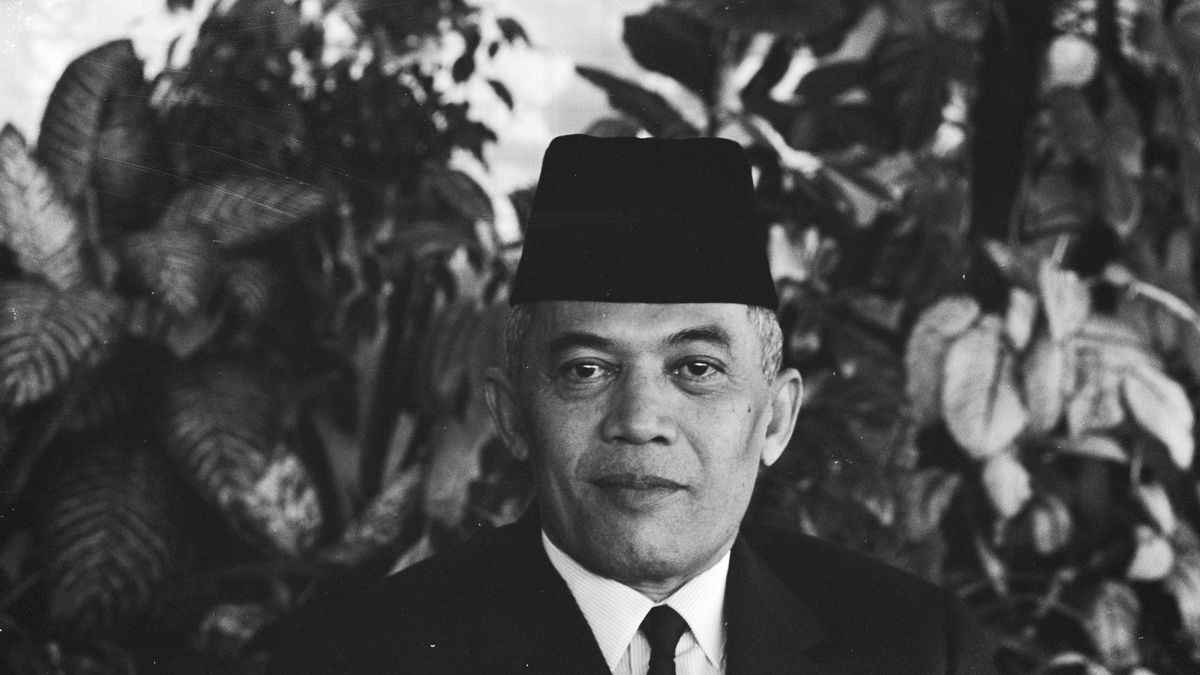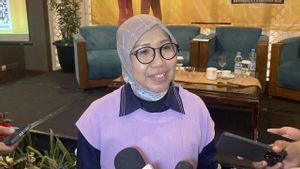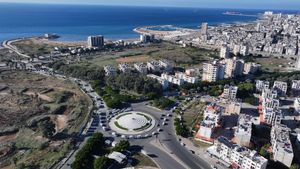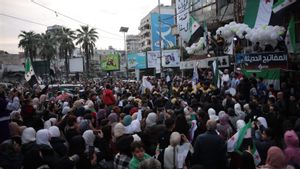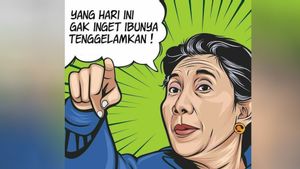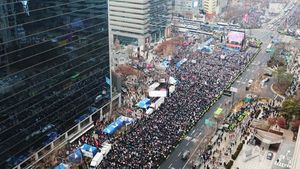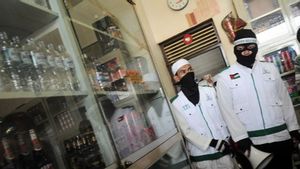JAKARTA - During his time, General Abdul Haris Nasution was a military figure who had an important position in this republic. In Indonesia, there are only three people who have the rank of Great General. And AH Nasution is one of them. The long path of his life to get that title was traversed with many contradictions.
In general, AH Nasution is known as one of the generals who managed to escape the September 30 Movement Incident (G30S). But to get to know more about Nasution's figure, we can look at his track record from both the military and political side. Nasution played a role in giving birth to ABRI's dual function, helping Suharto to become president until he was 'castrated' by Suharto.
Before entering the military world, the man who was born yesterday 3 December a century ago (1918) in Mandailing Natal, North Sumatra, had become a teacher in Palembang in 1939. This profession could not be separated from the wishes of his father H. Abdul Halim Nasution, who wanted his son to become a teacher. religion teacher.
Nasution received his basic education in Bukit Tinggi and continued it in Bandung, West Java. Shortly after becoming a teacher, he became interested in swerving to explore the military. Then Mr. Nas (his nickname) attended the Dutch military school, Koninklijke Militaire Academie (KMA), in Bandung, through the Corps Opleiding tot Reserve Officieren (CORO) program.
It was in November 1940 that Nasution's career in the military began. He joined the army formed by the Dutch Koninklijk Nederlands Indisch Leger (KNIL). Then he was appointed as Vaandrig (Assistant Lieutenant) in the KNIL Infantry unit in 1941. A year later, Nasution experienced his first war against Japan.
After Indonesia's independence, Nasution's career became increasingly prominent in the People's Security Army (TKR). It didn't take long for Nasution to be trusted as the Regional Commander of the West Java Siliwangi Division.
Nasution was known to be close to the two generals, namely Sudirman and Urip Sumohardjo. This closeness can be said to be Nasution's way to reach the peak of his career in the military. It was proven that after General Urip died, General Sudirman appointed a junior from General Urip, namely Nasution, to accompany him as Deputy Commander of TKR. His position as deputy to General Sudirman made his influence in the military even stronger. It was at this time that the conflicts began.
KNIL VS MAP
The first conflict arose in mid-1948. At that time the government wanted to make efficiency in the armed forces. Therefore, Bung Hatta applied the policy of Reorganization and Rationalization (Re-ra) within the army.
As the deputy commander in chief, Nasution was dominant in implementing the Re-ra program. As is known, in the army there are two "alma mater", namely alumni of KNIL and alumni of PETA. Nasution, who is a KNIL alumnus, is considered disproportionate by PETA alumni when dividing positions. The loudest protests came from PETA alumni, Colonel Sutarto, Commander of the Senopati Division Forces. However, the Siliwangi Division (which was once led by Nasution) fought back.
The friction between the Senopati Division and the Siliwangi Division was inevitable. On July 2, 1948, Colonel Sutarto, who often argued with Nasution's decision, was killed, his soldiers in the Senopati Division accused the Siliwangi Division of masterminding the killings. However, this accusation was denied when the Commander of the Solo Division, Major Ahmadi, conducted an investigation. He found evidence that Colonel Sutarto was killed by the PKI, not from the military.
Opposing Sukarno with Steel Tanks
Entering 1950, the conflict between KNIL and PETA in the army had not yet died out. That year, General Sudirman died and the post of commander was abolished. Then Major General TB Simatupang was appointed Chief of Staff of the Armed Forces (KSAP), while General Nasution was appointed Chief of Staff of the Army (KSAD).
At first the duet between Simatupang and Nasution went smoothly. However, when they tried to reorganize the TKR which had become the Indonesian National Army (TNI), friction returned. Nasution and Simatupang, both alumni of the KNIL army, were accused of cleaning the TNI from former PETA soldiers.
As a result, the Chief of General Staff of the TNI, a PETA alumni officer, Colonel Bambang Supeno, refused. He is said to have faced President Sukarno and the DPR directly to deliver his protest.
Nasution and Simatupang were not happy with Bambang Supeno's maneuvers. They think it goes against the military hierarchy. Nasution countered Supeno's maneuver by firing him. Not satisfied, Nasution also demanded the dissolution of the DPR by conveying it directly to President Sukarno on October 17, 1952.
However, Nasution's protests went too far. In order to convey his protest, he came carrying tanks, cannons and soldiers to the front of the palace. Nasution himself named this movement "Half Kudeta."
"This is not aimed at Bung Karno personally, but against the government system. Bung Karno must immediately dissolve the Parliament, ”said Nasution, as written by Cindy Adam in Sukarno's Biography of Connecting the People's Tongue (2000).
Hearing this statement, Sukarno growled. "My eyes flushed with anger. You were right in your demands, but wrong in your way."
Then Nasution replied, "When there is chaos in our country, everyone turns to the army, political figures make wars, but it is the soldier who has to die. It was only natural for us to also speak. "
The atmosphere at the Palace heated up, Sukarno then snapped Nasution "Tell Bung Karno what is in your heart, yes. but threatens the Father of the Republic of Indonesia, NO! DO NOT EVERYTHING! ”.
Not long after that, Nasution was questioned by the Attorney General's Office, he declared himself fully responsible for the incident and resigned from his position as Army Chief of Staff, but in Bung Karno's version, Nasution was dismissed.
In 1955, politics in Indonesia was again in its members. In order to minimize divisions in the army, in the end, the Cabinet of Burhanuddin Harahap reappointed AH Nasution as Army Chief of Staff. When he entered, he was also promoted to Major General.
The restoration of Sukarno's trust in Nasution strengthened his position, especially the army, to power. In 1958, for example, Nasution initiated a middle ground regarding the division of political and economic roles. The concept he voiced at the anniversary of the Military Academy in Magelang, Central Java on November 13, 1958, was the origin of the concept of "ABRI's dual function."
As a result, soldiers not only became ministers, but also governors, members of the DPR, and even became officials of state companies. Meanwhile, Nasution, as the main supporter, was positioned as the Minister of Defense and Security and concurrently as Army Chief of Staff. Previously, the Minister of Defense was always filled by civilian politicians, after the Decree of 5 July 1959, there were no civilian politicians who had direct contact with the military, except directly with President Sukarno.
Lifting Suharto and then overthrowing him
After the issuance of the Presidential Decree, Sukarno's political pendulum tilted more to the left. This can be seen in Sukarno's Nationalist, Religious, and Communist doctrines. The political power of Islam, which at that time was represented by Masyumi, who disagreed with Nasakom, was eliminated. The remaining two main forces remained, as a result the TNI and PKI became visible rivals. However, the military is a political force that has weapons, no wonder the military is more wary of it.
As the PKI strengthened, in 1962 Sukarno combined all military and police forces in the Indonesian Armed Forces (ABRI). At that time Nasution's role began to weaken. He was appointed Chief of Staff of the Armed Forces (KSAB) while Army command was given to Lieutenant General Ahmad Yani as Army Commander. While the control of the army was completely under Sukarno's control.
However, Nasakom's political breath was not long. The climax was when the G30S erupted, which was the main cause of Sukarno's downfall.
Meanwhile, at the end of the Old Order government, Nasution became Chairman of the Provisional People's Consultative Assembly (MPRS), he also rejected Sukarno's accountability speech (Nawaksara) entirely and revoked Sukarno's mandate as President. Nasution also appointed Suharto as Acting President of the Republic of Indonesia on March 12, 1967 and definitive President on March 27, 1968.
But after the red carpet for power was held by Nasution, a year later, Nasution was no longer the Chairman of the MPR. De jure, Nasution's military and political career had actually ended. Soeharto instead saw Nasution as a rival. He was restricted and did not appear again at the Army Staff School (Seskoad) and the Military Academy. In 1971, Nasution was retired from the military when he was 53 years old from the official schedule of 55 years.
Entering the 1990s, Suharto and Nasution's relations began to improve. In that year what many call national reconciliation between the two and other figures took place. In June 1993, when Nasution was sick, the military elite were seen visiting him. Through his delegation, the Minister of Research and Technology, BJ Habibie, Nasution was invited to IPTN and PT PAL. Of course, this could not have been done without Suharto's knowledge and approval.
Next, July 1993, Suharto invited him to the State Palace and continued on the invitation after the celebration of the Republic of Indonesia's Proclamation Day on August 18, 1993. Four years later, right on the TNI's birthday, October 5, 1997, Nasution was assigned the rank of Great General by the TNI. Nasution's journey then came to an end. Three years after being appointed as the Great General, at the beginning of the millennium, Nasution died September 5, 2000.
The English, Chinese, Japanese, Arabic, and French versions are automatically generated by the AI. So there may still be inaccuracies in translating, please always see Indonesian as our main language. (system supported by DigitalSiber.id)
